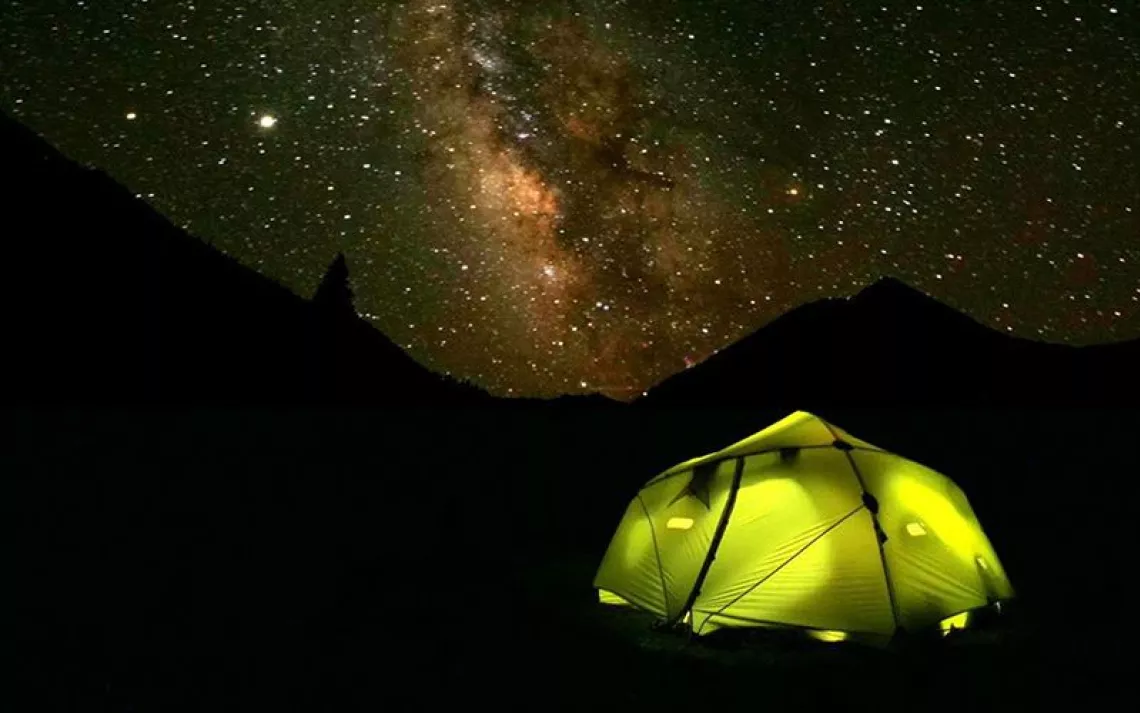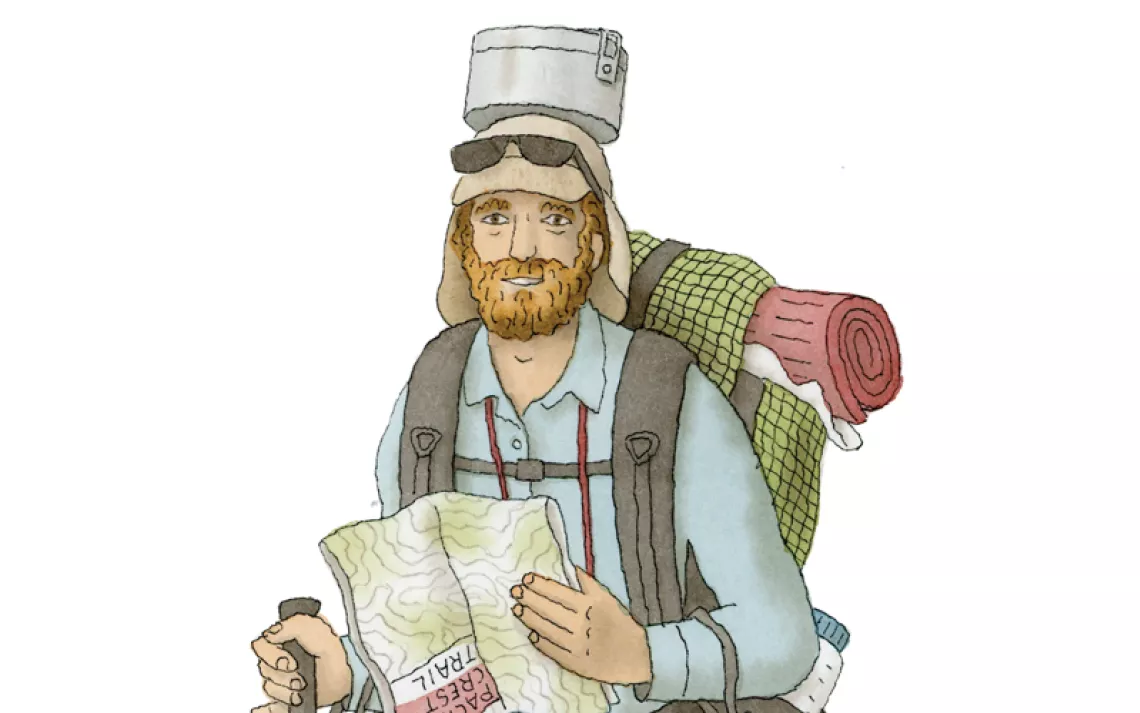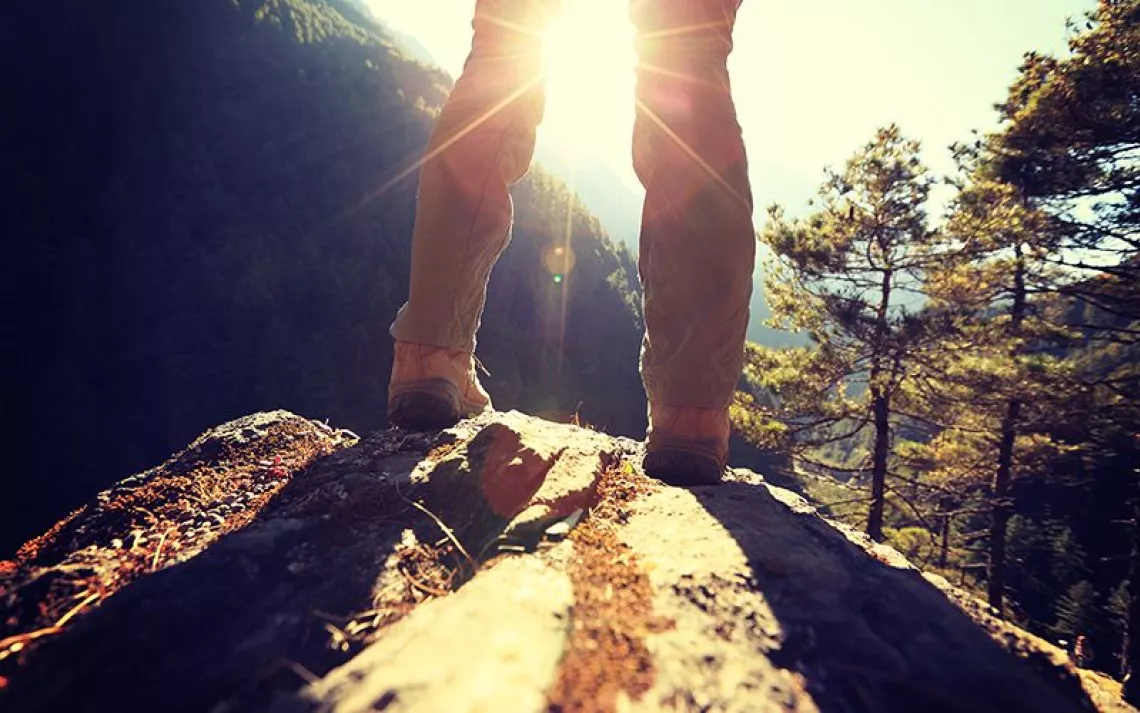Extreme Thru-Hiking

Sterling Coleman on Mount Washtingon, New Hampshire
Photos courtesy of Sterling Coleman
“What have I done?” asks Cheryl Strayed in the recently-released trailer for Wild. The author, played by Reese Witherspoon, reveals her backpacking naiveté along the Pacific Crest Trail, making rookie mistakes like adding to her pack until she could barely lift it, not wearing the right size hiking boots and the worst sin of all — going into unfamiliar territory without any real backpacking experience. From California to Washington, her hike was spent in 1000 miles. Several years later, another hiker on the opposite side of the country would do the same, times five.
When former software engineer Sterling Coleman began one of the longest trails in North America, he had never been camping before. Undeterred, he chose the Eastern Continental Trail, a 5,400 mile beast that starts in the Florida Keys and ends in Newfoundland, Canada. It’s made up of the Appalachian Trail and several smaller trails, and takes the better part of a year to complete. He was one of only two people to complete the ECT that year.
Sierra: What got you interested in the ECT?
Sterling Coleman: I was working at a software company in Texas, and I was tired of it and getting ready to quit. I was looking for something fun and adventurous and I was thinking about the Appalachian Trail because I grew up in Virginia, but I had never really touched it. Then I came across an online trail journal about the Eastern Continental Trail. That was in November of 2011, and that gave me about a month and a half to prepare, get gear and then fly down to Key West and start walking.
Pines on Old Sod Farm
S: Deciding a month before you go was pretty impulsive.
SC: Yeah, it was, and it kind of showed in my inexperience in the beginning of the trail. But the nice thing about the beginning of the Eastern Continental Trail is that it’s not really that difficult because Florida is flat. That’s one of the reasons I recommend the ECT to Appalachian Trail hikers. People doing the Georgia section of the Appalachian Trail, which is very up and down, were having problems with carrying too much gear and getting fit. One advantage of starting in Florida is you get fit on easier sections and then ramp up the difficulty a little slower.
S: What kind of hurdles did you run into due to your inexperience?
SC: For starters, I flew into Key West and American Airlines managed to lose my bags. I had my backpack, my sleeping bag and some other essentials but I didn’t have things like trekking poles. I also managed to walk out of Key West without any food. I got food at a Burger King, but then after that there was nothing. I walked the rest of the first day and the whole second day with nothing but Gatorade. That was pretty rough. Then I was stealth camping in the Keys, which means I was just sleeping out in the woods somewhere where someone wouldn’t notice me, and I managed to puncture the sleeping pad I was on. I ended up sending it to REI and didn’t replace it. I also misplaced my tarp so I had to order another one. I went to February before I ever got another, so that was over a month with no shelter. I got lucky there because it never really rained at night.
Caribou crossing a boardwalk
S: What makes the ECT different from any other trail?
SC: One thing is the mental aspect of how long the trail is. If I didn’t go fast enough every day it would be way too cold in Newfoundland by the time I got there. It wasn’t easy to maintain my pace. I ended up doing about 30 miles every day, and I probably took about one day off a week. That can take its toll on you after a while — if you’re doing that pace for the Appalachian Trail you’ll be done with the whole thing in maybe three months, but I had to do it for eight months. Probably the single most difficult mental challenge on the trail is finishing the Appalachian Trail and going on to the International Appalachian Trail because you have to leave your friends behind. The AT is a very social trail.
S: What surprised you most on the ECT?
SC: Loop Road in Florida was one of the most surreal experiences because as someone who’s not really used to a swamp, you’re just kind of walking along a dirt road and as you keep going further there’s nothing but alligators just tanning and sunbathing on each side of the road. You don’t really notice them until they notice you, and then they dash back into the water. It’s startling for sure, but not really that dangerous since they’re not looking to prey on humans. I think the most startling are the grouse, though. A grouse is a type of bird —it’s not dangerous at all— but it’s startling because they nest on the ground and when you walk near them they flap their wings and make loud noises to try and distract you from their nest. People who are hiking all day just walk along in their own mindset sometimes, lost in their thoughts, and then all of a sudden this really loud bird comes squawking out from under their feet.
Sterling Coleman on Crow's Head, Newfoundland
S: You contracted giardia when you got into Canada.
SC: Having giardia feels terrible because your stomach really hurts, you have to go to the bathroom all time. I got giardia in America but then I walked across the border and didn’t realize I had it until maybe the next day when I still felt awful. I was trying to hitch a ride to the hospital but nobody would pull over for several hours. Thankfully I got some pills at a hospital in Canada and got better.
S: Did you ever think about giving up?
SC: Yeah, definitely. In Florida I was doing pretty bad after two days with not much food, my feet were hurting a lot and I was thinking about quitting. But the times when I felt like quitting were very few. There were times near the end where I thought about finishing early, just because some of the hiking in Canada is not as interesting as the Appalachian Trail, but I’m glad I continued on because Newfoundland is a pretty wild place.
 The Magazine of The Sierra Club
The Magazine of The Sierra Club



